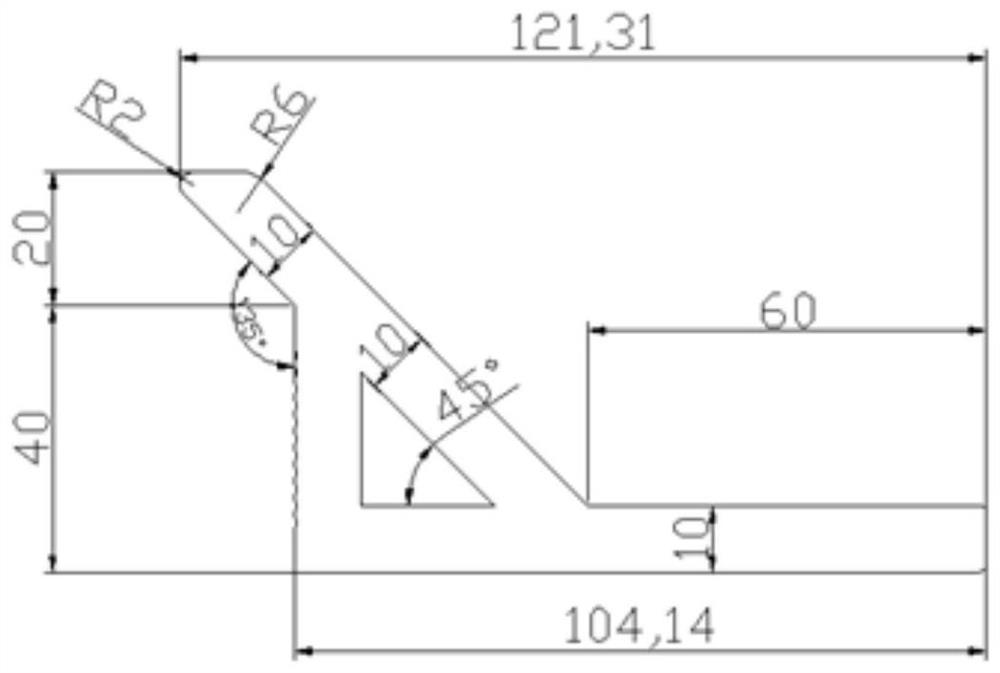Solid waste composite material, and preparation method and application thereof
A technology of solid waste and composite materials, which is applied in the field of solid waste composite materials and its preparation, can solve the problems of low product recycling rate, difficult mold processing, long mold production cycle, etc., and achieve high recycling rate and low cost. The effect of low cost and low raw material cost
- Summary
- Abstract
- Description
- Claims
- Application Information
AI Technical Summary
Problems solved by technology
Method used
Image
Examples
Embodiment 1
[0040] A method for preparing a mold for the production of a prefabricated building component, which consists of the following steps:
[0041] a. Raw material sieving: sieve fly ash and waste PVC raw materials through 20-200-mesh sieves, the sieve residue is less than 5%, and pack for use;
[0042] b, batching mixing: composition according to weight percentage: fly ash 58%, waste and old PVC 37%, stabilizer 2.5%, modifier chlorinated polyethylene 2%, the first lubricant stearic acid 0.2%, the second lubricant paraffin 0.3% for weighing, and uniformly mix all the above materials; the stabilizer is a rare earth composite stabilizer, and the rare earth composite stabilizer is a rare earth composite stabilizer for BRE-B series plates.
[0043] c. Extrusion molding: use an extrusion molding machine to extrude the mixed raw materials, the temperature range of barrel 1 is 178°C, the temperature range of barrel 2 is 180°C, the temperature range of barrel 3 is 190°C, and the temperatur...
Embodiment 2
[0047] A method for preparing a mold for the production of a prefabricated building component, which consists of the following steps:
[0048] a. Raw material screening: sieve fly ash, ferrosilicon ash and waste PVC raw materials through a 20-mesh to 200-mesh sieve. The sieve residue is less than 5%, and the package is ready for use;
[0049] b. Homogenization and mixing: Composition by weight percentage: fly ash 64%, waste PVC 32%, stabilizer 1.7%, modifier 1.7% (chlorinated polyethylene 1.5%, acrylate copolymer 0.2%), the first lubricant Stearic acid 0.3%, the second lubricant 0.3% (paraffin 0.1%, PE wax 0.2%) are weighed, and all the above materials are uniformly mixed; the stabilizer is a rare earth composite stabilizer, and the rare earth composite stabilizer is BRE-B Rare earth composite stabilizer for series plates.
[0050] c. Extrusion molding: Use an extrusion molding machine to extrude the mixed raw materials. The temperature range of barrel 1 is 185°C, the tempera...
Embodiment 3
[0054] A method for preparing a mold for the production of a prefabricated building component, which consists of the following steps:
[0055] a. Raw material screening: sieve fly ash, ferrosilicon ash and waste PVC raw materials through a 20-mesh to 200-mesh sieve. The sieve residue is less than 5%, and the package is ready for use;
[0056] b. Homogenization and mixing: Composition by weight percentage: fly ash 70%, waste PVC 26%, stabilizer 1.9%, modifier 1.5% (chlorinated polyethylene 0.7%, acrylate copolymer 0.8%), the first lubricant 0.4% stearic acid as the agent and 0.2% PE wax as the second lubricant are weighed, and all the above materials are uniformly mixed; the stabilizer is a rare earth composite stabilizer, and the rare earth composite stabilizer is a rare earth composite stabilizer for BRE-B series plates.
[0057] c. Extrusion molding: use an extrusion molding machine to extrude the mixed raw materials. The temperature range of barrel 1 is 180°C, the temperatu...
PUM
 Login to View More
Login to View More Abstract
Description
Claims
Application Information
 Login to View More
Login to View More - R&D
- Intellectual Property
- Life Sciences
- Materials
- Tech Scout
- Unparalleled Data Quality
- Higher Quality Content
- 60% Fewer Hallucinations
Browse by: Latest US Patents, China's latest patents, Technical Efficacy Thesaurus, Application Domain, Technology Topic, Popular Technical Reports.
© 2025 PatSnap. All rights reserved.Legal|Privacy policy|Modern Slavery Act Transparency Statement|Sitemap|About US| Contact US: help@patsnap.com


